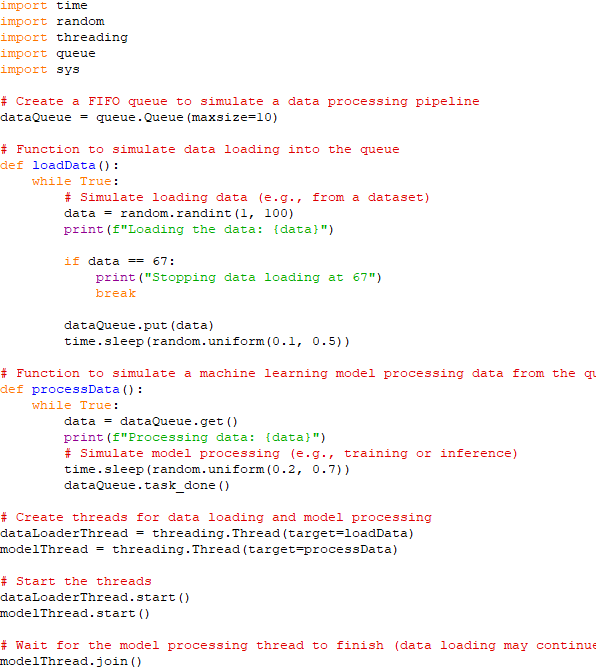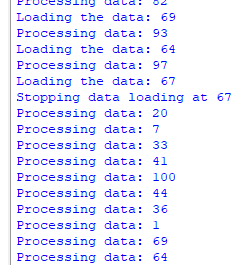Queues in ML and CS - Python for Integrated Circuits - - An Online Book - |
||||||||
| Python for Integrated Circuits http://www.globalsino.com/ICs/ | ||||||||
| Chapter/Index: Introduction | A | B | C | D | E | F | G | H | I | J | K | L | M | N | O | P | Q | R | S | T | U | V | W | X | Y | Z | Appendix | ||||||||
================================================================================= In machine learning and computer science in general, a "queue" refers to a data structure used for organizing and managing a collection of elements, often in a first-in, first-out (FIFO) order. Queues are essential for various algorithms and applications, including those in machine learning. Here's how queues are typically used in machine learning:
Common queue implementations include data structures like FIFO queues, priority queues, and task queues. In practice, you may use specific libraries or services such as Apache Kafka, RabbitMQ, Redis, or cloud-based queuing services like AWS SQS or Google Cloud Pub/Sub to implement queues in your machine learning applications. These services provide robust and scalable queuing solutions suitable for various ML workflows. ============================================ Simulates a data processing pipeline where data is loaded into a queue, and a machine learning model consumes and processes the data: i) Create a FIFO queue data_queue with a maximum size of 10 to simulate a data processing pipeline. ii) The process_data function simulates a machine learning model processing data from the queue. It retrieves data from the queue, processes it (simulated by a sleep), and marks the task as done. iii) Create two threads, one for data loading and one for model processing The threads are started, and they run concurrently. iv) Data loading and model processing would continue indefinitely until the machine learning task is complete. Code: This program demonstrates how a queue can be used to manage the flow of data between different components of a machine learning system, ensuring that data is processed in a controlled and orderly manner. The script ends the loop of the load_data thread when it encounters the number 67. ============================================
|
||||||||
| ================================================================================= | ||||||||
|
|
||||||||

